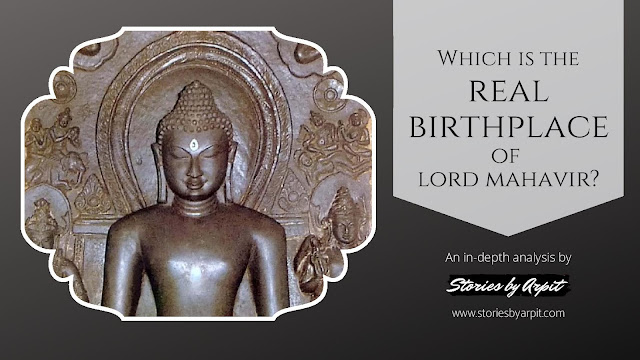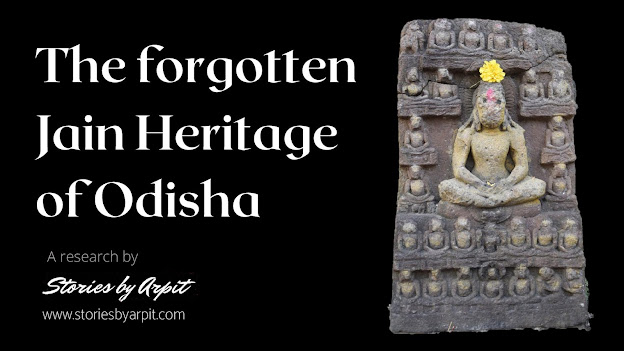Rediscovering Roots: A seeker’s pilgrimage to his past – Part 1
In a world that's constantly moving forward, have we ever paused to think about our roots and the stories of our forefathers? Today, I share the heart-warming story of an ordinary individual named Shri Ashwani Jain Bhandari, who reconnected with his roots in the region now known as Pakistan. Ashwaniji, tracing his lineage back to eight generations, embarked on a journey fueled by a yearning to reconnect with his heritage. This story is a testament to the power of ancestry and the enduring bond we share with our past.
The Legacy
Ashwaniji belongs to the eighth generation of Shri Lakkhu Shah, a visionary Digambar Jain moneylender who migrated from Khandela in Rajasthan to Sankhatra in undivided Punjab (now in Narowal District, Pakistan) around 1802-1803 CE. Sankhatra, once known as Hemnagar, was a bustling town at the confluence of the Silk Route. Lakkhu Shah's adventurous spirit and willingness to leave his home in Khandela brought remarkable success over the next three generations.
During a period of calm and political stability under Maharaja Ranjit Singh, the environment was ripe for business growth. As the family expanded, Lakkhu Shah's descendants flourished in various businesses, including grain, cattle, and land, in addition to moneylending. His sons inherited his acumen, and the family thrived in Sankhatra.
Even after the end of the Sikh Empire and the beginning of British rule, the family’s business continued to prosper. By the 1860s, they were wealthy enough to purchase a fort (Quilla) from the British, which had originally belonged to a Sikh nobleman. This fort became the family's residence and business hub.
The Quilla was so large that more than 20 families of the fourth and fifth generations of Lakkhu Shah lived together on the third and fourth floors. The ground floor was used for business activities and guest rooms for government officials on tours, while the first floor was used to store grains. The grand gates of the fort were so immense that men riding on elephants could enter without dismounting. With so many people, family events were frequent, and the second floor served as an in-house convention center. The family's prosperity continued, and the fourth generation purchased a haveli in Sankhatra.
In the late 1880s, Shri Atmaramji Maharaj (Acharya Shri Vijayanandsurishwarji Maharaj), a Shwetambar Jain Acharya, was vigorously promoting murtipuja (idol worship) in Punjab. Under his influence, the fourth and fifth generations of Lakkhu Shah decided to adopt the Shwetambar Murtipujak tradition. In the following years, these generations of the family decided to construct a Shikharbandhi Jinalay in Sankhatra, making significant contributions to its construction. This spiritual shift marked a significant chapter in their religious journey.
The temple's consecration in 1896, led by Acharya Shri Atmaramji Maharaj, was a monumental event, marking the last praan pratishtha conducted by the revered Acharya just 23 days before his Kaldharma in Gujranwala (also now in Pakistan). Navyug Nirmata, a book written under the guidance of Acharya Shri Vijay Vallabhsurishwarji Maharaj notes that when Acharya Shri Atmaramji Maharaj saw Sankhatra’s Jinalay for the first time, he was overjoyed. He stated that the temple was unique in Punjab and equated it with Shri Adinath Bhagwan’s Jinalay in Shatrunjay Mahatirth. While climbing the temple stairs, Acharya Shri told “Vallabh! This feels like climbing the stairs of Shatrunjay hill!” During the Anjanshalaka Pratishtha Mahotsav, 275 idols, including the Mulnayak pratima of Shri Dharmanath Bhagwan, were consecrated by Acharya Shri. After the Pratishtha in Sankhatra, many of these consecrated idols were installed in various tirths and cities, including the Motishah Sheth Tunk in Shatrunjay.
Lala Beliram, from the fifth generation, was Ashwaniji’s great-grandfather. A visionary, he prioritized education by sending two children from the sixth generation for higher studies in Lahore. Lala Bholanath, Ashwaniji’s grandfather, was the first graduate in the family. Educated in Lahore, he excelled in academics and sports, including swimming, riding, and cricket. He received a direct appointment as a Tehsildar immediately after graduation.
The family's focus on higher education and the expansion of railway infrastructure gave them the confidence to open branches in Amritsar and Jalandhar. Lala Bholanath was socially active, rising to become the president of (Greater) Punjab Mahasabha in 1926 at the young age of 34 (the Punjab referred here is the undivided Punjab which includes the current Punjab in Pakistan, the state of Punjab in India as well as parts of Himachal Pradesh and Haryana). In 1923-24, due to an error in judgment, the Sankhatra Jains suffered massive losses. As an educated person, Lala Bholanath tried different businesses and eventually found his passion in trading rubber balls and sports goods in Sialkot. His social contacts helped him sell goods as far as Chennai in southern India. Although an arts graduate, he taught himself the art of manufacturing rubber goods.
Later, he joined the loss-making Lakshmi Rubber Works in Karachi and turned it around by introducing the manufacturing of moulded rubber goods, making the entity profitable. After World War II, Lala Bholanath started American Rubber Mills in Sialkot, manufacturing various rubber items. Even though his sons Shiv Kumar, Vijay Kumar (Ashwaniji’s father), and Bhushan were still in school, they assisted him in running the factory.
However, the partition of 1947 forced the family to leave everything behind with only the clothes on their backs. The daily puja conducted at Sankhatra Jain temple for 51 uninterrupted years stopped overnight. The eight-member family of Lala Bholanath got separated into three groups. They lost everything and had to restart their lives as labourers in trans-Yamuna Delhi. In 1950, another Jain family (of Lala Kharaitiram) from Jhelum, provided finance and Lala Bholanath and his sons provided technology, leading to the establishment of American Rubber Mills in Shahdara, Delhi.
Born in 1955, Ashwaniji, the son of Vijay Kumar, grew up listening to tales of Sankhatra from his paternal grandparents and uncles, fostering a deep connection to his ancestral roots. Despite moving to Canada for professional reasons, his longing for ancestral roots never faded. Although an engineer, Ashwaniji meticulously studied history and traced his lineage back to the 18th century, compiling a detailed record of his ancestors and their legacy.
 |
| Family tree of Shri Lakkhu Shah |
The Rekindling of a Dream
In 2019, Ashwaniji came across a book highlighting the sad and deteriorated condition of 23 Jain temples in Pakistan, including the Jain temple in Sankhatra that his forefathers had built. Iqbal Qaiser, a Muslim author, presented this book, written in Gurmukhi, to Ashwaniji in Canada. This rekindled a long-lost connection and desire.
During COVID, Ashwaniji found a YouTube video featuring the Shikhar (spire) of the Sankhatra temple, noting that it remains the tallest building in Sankhatra even today. After six months, he was able to contact the channel's owner and, through them, the current occupiers of the temple, which had been converted into a private residence. The locals were incredibly supportive, sharing detailed videos and photographs of the temple. Ashwaniji maintained regular contact with them, exchanging stories and sending greetings on festivals.
Finally, after decades of yearning, Ashwaniji crossed the Attari border in June 2024, embarking on an emotional journey to his ancestral homeland, Sankhatra. Over nearly two weeks, he travelled to more than ten locations in Pakistan, including his ancestral hometown (Sankhatra, Narowal, Quila Sobha Singh, Sialkot, Gujranwala, Papnakha, Rasool Nagar, Lahore, Bahawalpur, Derawar, Multan & Harappa). His journey, the warmth and affection from the locals, and his experiences exploring his Jain heritage will be documented in the subsequent parts of this series.
 |
| A vignette from Ashwaniji's Pakistan tour |
As we reflect on Ashwaniji's journey, we must ask ourselves: to what lengths would we go for our heritage, hometown, and roots? Ashwaniji ventured to Pakistan, but most of us have our roots in India. Do we care enough to reconnect with them?
To be continued...











Comments
Post a Comment